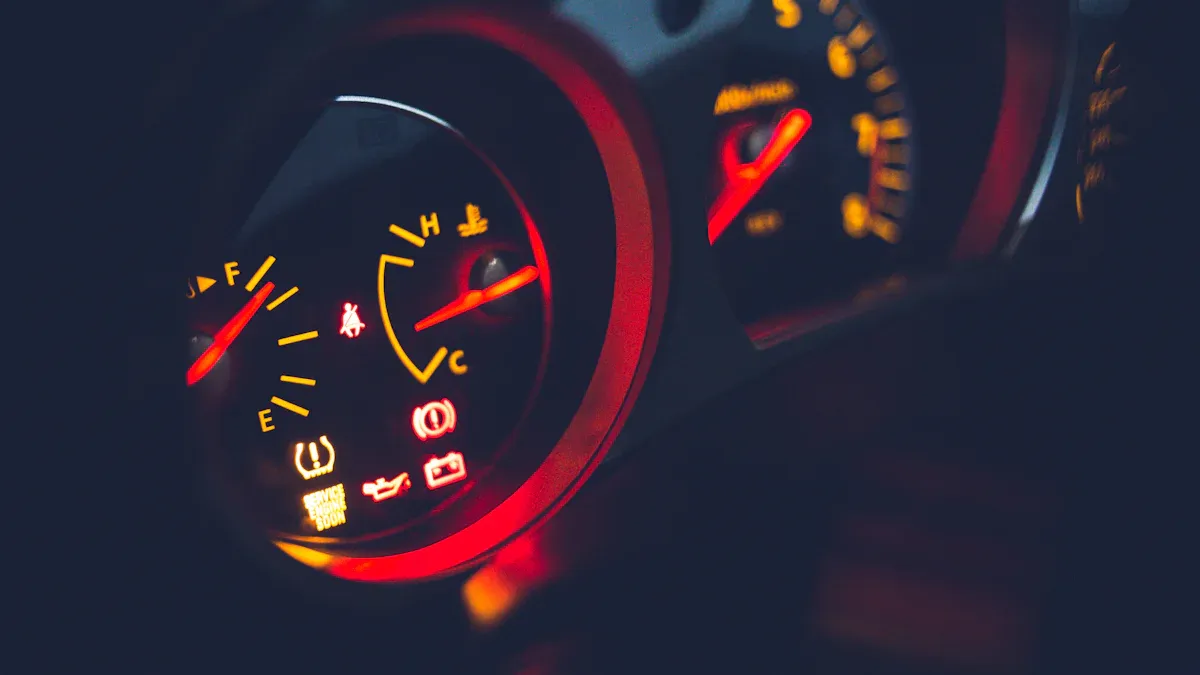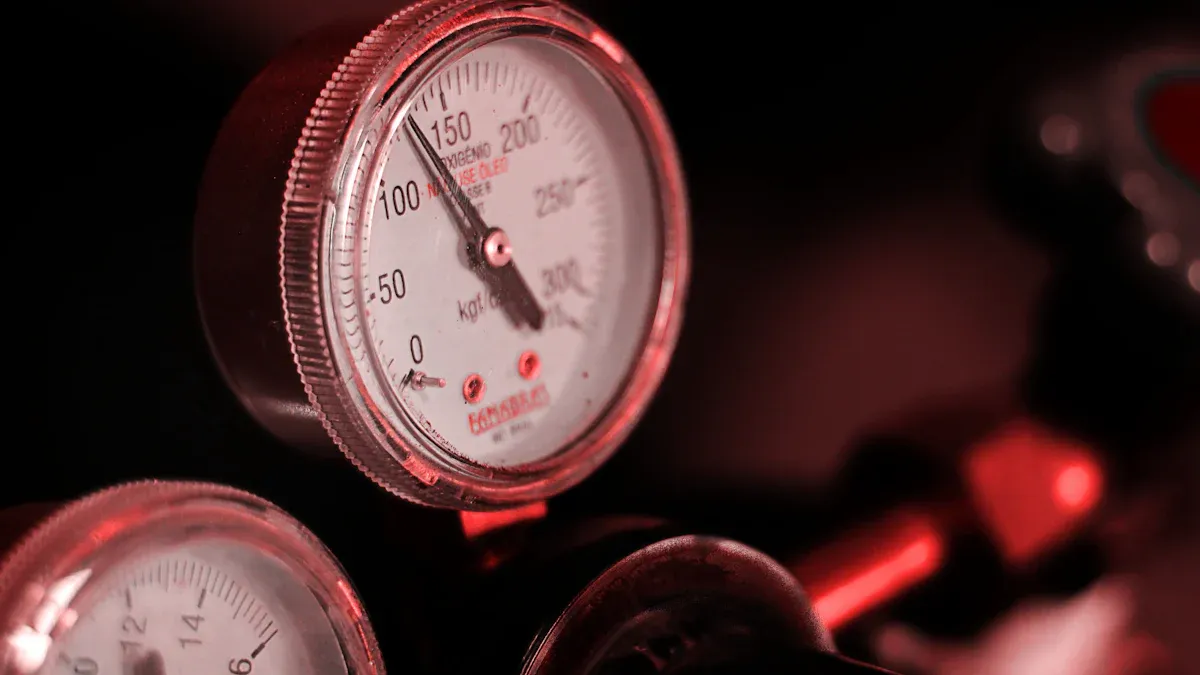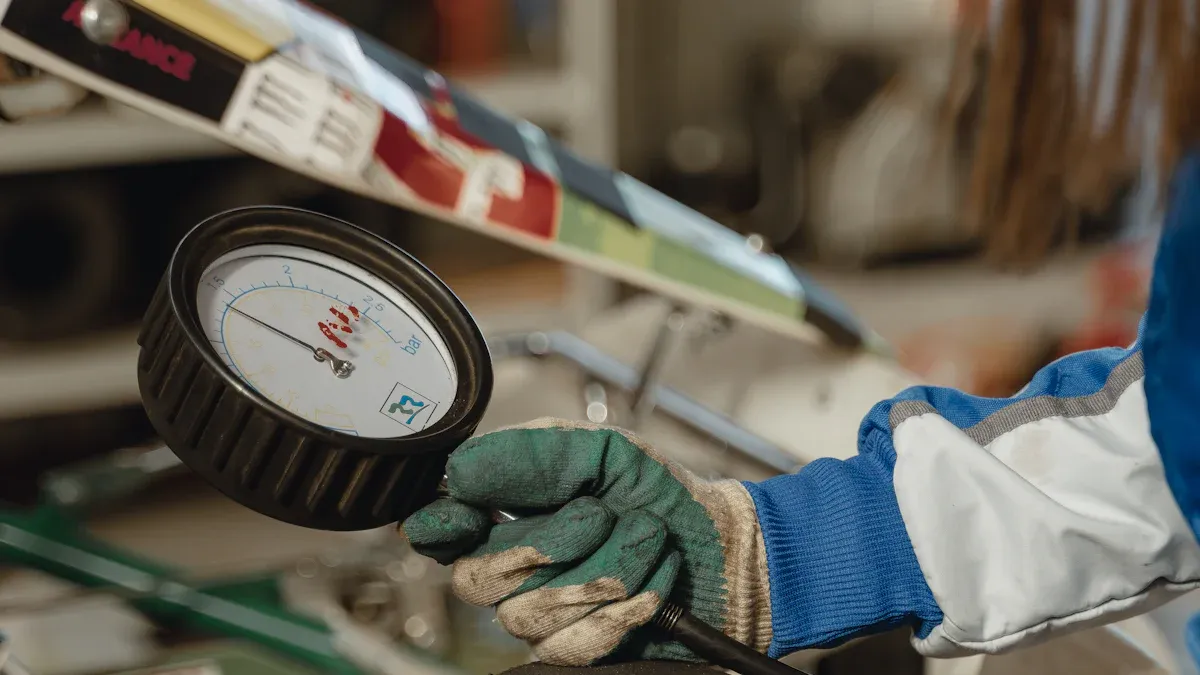What is a Manifold Pressure Sensor and How Does It Work

A manifold pressure sensor monitors the air pressure in your engine’s intake manifold, ensuring the right amount of fuel and precise ignition timing. This sensor helps you save gas and reduce pollution by providing real-time data for the optimal air-fuel mixture. Modern manifold pressure sensors often incorporate MEMS technology, making them more accurate and durable even under tough conditions. It’s crucial to regularly check the sensor because a faulty one can cause your car to lose power without warning.
Many new vehicles rely on this sensor to meet strict emission standards and improve engine performance. Keep booming in your automotive projects by choosing quality parts from a trusted Electronic Components Distributor.
Key Takeaways
The manifold pressure sensor checks air pressure in the engine. It helps control how much fuel is used and when the spark happens. This makes the engine work better.
The sensor sends live data to the car’s computer. The computer uses this data to change fuel and spark. This helps the car drive smoothly and makes less pollution.
A good sensor helps save gas and lowers pollution. It also helps your car pass emissions tests.
Look for signs like the check engine light or weak engine power. High fuel use or stalling can also mean sensor problems. Catching these early can help.
Check, clean, and change the sensor often if needed. This keeps your engine healthy and saves money on repairs.
1. Manifold Pressure Sensor Function

Air Pressure Measurement
The manifold pressure sensor checks the absolute pressure inside the intake manifold. This tells you how much air goes into the engine right now.
The sensor has a tiny diaphragm that bends when air pressure changes. When it bends, it makes an electrical signal. The engine control unit (ECU) reads this signal to know the air pressure.
Measuring air pressure correctly is very important for your engine. The ECU uses this information to figure out how much fuel to use. If you drive in high places, the air is thinner. The manifold pressure sensor notices this, and the ECU changes the fuel injection so your engine works well.
Different sensor types help make these measurements exact. Some sensors use strain gauges. Others use capacitive or inductive ways. Each type turns pressure changes into electrical signals. This gives you real-time data for better engine control.
Tip: A good manifold pressure sensor helps your car save gas and lower emissions by keeping the air-fuel mix correct.
Engine Load Detection
The manifold pressure sensor also helps the car’s computer know how hard the engine works. When you press the gas pedal, the pressure in the intake manifold changes. The sensor finds these changes and sends real-time data to the ECU.
The ECU uses this to change fuel delivery and ignition timing. For example, if you pull a trailer or go uphill, the engine works harder. The sensor sees the pressure change, and the ECU adds more fuel and changes the spark timing to keep your engine strong.
Real-time engine load detection helps your car work better and use fuel wisely. It also helps control emissions by making sure the engine burns fuel cleanly all the time.
By checking both air pressure and engine load, the manifold pressure sensor is very important for keeping your engine healthy and efficient.
2. How the Manifold Pressure Sensor Works

Sensing Technology
Most modern manifold pressure sensors have a silicon membrane. This thin layer bends when the air pressure changes inside the intake manifold. Engineers make the membrane in different shapes and thicknesses. For example:
A longer or thinner membrane can sense small changes better, but it might not be as exact.
Some sensors have stiff spots or special areas to help them work better.
W-shaped piezoresistors are good for sensing pressure from the side. Line-shaped ones are better for straight pressure.
New materials like silicon carbide and advanced carbon help sensors work in high heat. These materials also let sensors be very thin.
Studies show that Cr-doped V2O3 thin films make sensors react strongly to pressure changes. Sapphire membranes are also very sensitive and can handle tough conditions.
Note: These design choices help your manifold pressure sensor stay correct and dependable, even when your engine gets very hot or shakes a lot.
Signal Conversion
The sensor turns air pressure into an electrical signal. Here is how it works:
The silicon membrane bends when the pressure changes.
This bending changes the resistance in the piezoresistive parts.
The sensor’s circuit checks this change and makes it into a voltage or current.
Some sensors use a Wheatstone bridge circuit to be more exact.
The output signal is usually between 0.5 and 4.5 volts. This matches the pressure inside the manifold.
Advanced designs use amplifiers and voltage followers. These keep the signal steady and easy for the car’s computer to read.
If you look at pneumatic transmitters, you will see they use moving parts to make a signal. In your car, the electrical way is faster and works better.
ECU Communication
The manifold pressure sensor sends its signal right to the engine control unit (ECU).
The ECU gives the sensor a steady 5-volt power supply.
The sensor’s output voltage changes as the pressure changes. This lets the ECU know what is happening inside the intake manifold.
The ECU checks the signal for any problems. If the voltage is not normal, the ECU sets a trouble code like P0105 or P0107.
Sensors like the 0 281 002 977 can work from -40 to 85°C. This shows they can handle tough engine conditions.
The ECU uses this data to change fuel injection and ignition timing. This keeps your engine running well and using fuel wisely.
Tip: Good communication between the manifold pressure sensor and the ECU helps your car save gas, lower pollution, and avoid engine trouble.
3. Importance for Engine Performance
Fuel Efficiency
A working manifold pressure sensor helps your car use less gas. The sensor tells the ECU how much air goes into the engine. With this information, the ECU can change the fuel amount for the best mix. If you drive uphill or carry heavy things, the sensor tells the ECU to add more fuel. On flat roads, it helps the engine use less fuel. Many people see better gas mileage when the sensor works right. This saves you money and helps your engine last longer.
Tip: Keeping the manifold pressure sensor clean and working right stops your engine from wasting fuel.
Emissions Control
Your car helps the environment when it burns fuel well. The manifold pressure sensor is important for this. The sensor gives the ECU real-time air pressure data. The ECU uses this to keep the air-fuel mix balanced. When the mix is right, your engine makes fewer bad gases. This helps your car pass emissions tests and follow pollution rules. New cars use this sensor to meet tough standards and cut down on smog.
Throttle and Turbo Monitoring
Your car runs smoother and has more power when it checks the throttle and turbo. Modern engine systems use electronic throttle control to watch and change the throttle position. This gives you a quick response when you press the gas pedal. For turbo engines, the system checks boost pressure and changes fuel and spark timing. This stops engine knock and gives you more power when needed. Data logging and real-time checks help tune your engine for the best results. You can see things like:
Up to 25% more power in a turbo sports car after tuning boost pressure and air/fuel mix.
Up to 15% better fuel use in a diesel truck by changing fuel injection timing.
Smoother driving, more power, and less pollution.
Metric/Factor | Description | Relation to Throttle and Turbo Monitoring |
|---|---|---|
Thrust | Forward force made by the engine, measured in Newtons or pounds-force. | Goes up with more throttle; higher throttle means more thrust. |
Specific Fuel Consumption (SFC) | Fuel mass used per unit thrust per hour, showing fuel efficiency. | Gets higher with more throttle; turbo boost control helps SFC. |
Boost Pressure | Air pressure from the turbocharger, managed for power and to stop knock. | Watched and controlled by engine systems. |
When you keep your manifold pressure sensor and other systems working well, you get the best power, good gas mileage, and cleaner air.
4. Manifold Pressure Sensor Symptoms
When your manifold pressure sensor starts to fail, your car gives you clear signs. You can spot these symptoms early and prevent bigger engine problems. Here are the most common signs to watch for:
Check Engine Light
You may see the check engine light turn on in your dashboard. This light warns you that something is wrong with your engine’s sensors.
The engine control module (ECM) checks the manifold pressure sensor all the time. If the sensor sends strange signals, the ECM sets a trouble code and turns on the warning light.
You can use a code reader to find out if the problem comes from the manifold pressure sensor.
🚨 If you see the check engine light, do not ignore it. A quick check can save you from costly repairs.
Poor Performance
Your car may feel weak or slow when you press the gas pedal.
The ECM uses data from the manifold pressure sensor to decide how much fuel and spark your engine needs.
If the sensor gives wrong data, the ECM may send too little fuel. This causes your car to lose power, hesitate, or struggle to keep speed.
You might notice rough idling, stalling, or jerky movements. These problems happen because the air-fuel mix and ignition timing are not right.
High Fuel Use
You may need to fill up your gas tank more often.
A faulty sensor can make the ECM add too much fuel. This wastes gas and hurts your wallet.
Bad fuel economy often means the engine burns more fuel than it should. The wrong air-fuel mix causes this problem.
Engine Stalling
Your engine may stop running suddenly, especially when you slow down or stop.
The ECM cannot keep the engine running smoothly without good data from the sensor.
Stalling can happen at idle or while driving. This makes your car unsafe and hard to trust.
If you notice any of these symptoms, check your manifold pressure sensor soon. Fixing it early keeps your engine healthy and saves you money.
5. Troubleshooting and Maintenance
Visual Inspection
Begin by looking at the manifold pressure sensor if you think there is a problem. Check for loose wires, broken connectors, or dirt on the sensor. Technician A says looking at the sensor is a good first step to find problems. You might see wires that are damaged or spots with rust. These can make the sensor stop working. This step does not tell you if the sensor works perfectly, but it helps you find easy-to-see problems fast. If you notice anything wrong, clean the sensor and connectors with a soft brush or special cleaner.
🔍 Tip: Always take off the battery cable before you touch engine sensors to stay safe.
Diagnostic Tools
Use special tools to get the right results. An OBD-II scanner plugs into your car and reads codes from the engine control module. This tool tells you if the manifold pressure sensor sends the right signals. A multimeter checks the sensor’s voltage. You can test the sensor at different engine speeds to see if it works right. These tools help you find wiring problems or sensor issues. Some scanners also let you reset the engine control module and set up the sensor for best results.
Replacement Tips
If cleaning and testing do not fix the problem, you might need a new sensor. Changing the sensor is easy for most cars. Unplug the old sensor, take it out, and put in the new one. Make sure you use the right part for your car. Prices can be different, so look at the table below for average costs:
Cost Aspect | Cost Range / Average | Notes |
|---|---|---|
Cost per sensor | Average around $100 to $150 per sensor | |
Labor costs | Varies | Depends on location and service provider |
Sensor quality | OEM more expensive than aftermarket | OEM ensures compatibility; aftermarket cheaper but may have issues |
If you are not sure, ask a mechanic for help. This keeps your engine working well and stops bigger repair bills.
You help your engine stay healthy by checking the manifold pressure sensor often. This sensor lets your car run better, use less gas, and pass emissions tests. If you take care of it, your car will not pollute as much. A study in Hong Kong showed that cars with bad sensor care made up to ten times more pollution. Always pick good parts and talk to a trusted mechanic if you need help. Doing easy checks and fixing problems quickly keeps your car safe and helps the environment.
FAQ
What happens if my manifold pressure sensor fails?
You may notice your car runs rough, uses more gas, or stalls. The check engine light may turn on. Your engine may lose power. You should check the sensor soon to avoid bigger problems.
Can I drive with a bad manifold pressure sensor?
You can drive for a short time, but it is not safe. Your engine may stall or use too much fuel. You risk damaging other parts. Fix the sensor as soon as possible.
How often should I replace the manifold pressure sensor?
Most sensors last over 100,000 miles. You do not need to replace it unless you see symptoms or your mechanic finds a problem. Always follow your car’s maintenance schedule.
Is cleaning the manifold pressure sensor helpful?
Yes! Cleaning the sensor can fix small issues caused by dirt or oil. Use a special cleaner and a soft brush. If cleaning does not help, you may need a new sensor.
How much does a new manifold pressure sensor cost?
Sensor Type | Price Range |
|---|---|
OEM | $100 – $250 |
Aftermarket | $50 – $150 |
Labor costs may add extra charges. Always choose a trusted brand for best results.
See Also
Simple Steps To Integrate Sensors Using SN74LVC4245APW
How To Use ADXL357BEZ For Motion Sensing And Stability
ARTESYN NPT42-M Solutions For Industrial Automation Power
Effortless Engine Management With SPC56 Microcontroller Technology
CALL US DIRECTLY
(+86)755-82724686
RM2508,BlockA,JiaheHuaqiangBuilding,ShenNanMiddleRd,Futian District,Shenzhen,518031,CN
www.keepboomingtech.com sales@keepboomingtech.com
